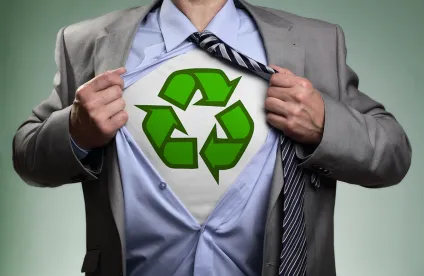During his campaign and with several Executive Orders issued during his first week in office, President Biden made clear that environmental justice (EJ) reforms are a priority of his Administration. So, where are we one year into his Presidency? This post provides a brief update on federal programs, initiatives and policies aimed at environmental justice that have been announced or implemented by the Biden Administration during the past year.
On January 20, 2021 – his first day in office – President Biden signed several Executive Orders that included specific initiatives focused on environmental justice. Executive Order 13985: “Advancing Racial Equity and Support for Underserved Communities through the Federal Government” ordered executive departments and agencies to work to redress inequities in their policies and programs that serve as barriers to equal opportunity. Executive Order 13990: “Protecting Public Health and the Environment and Restoring Science To Tackle the Climate Crisis” announced that his Administration “must advance environmental justice” and the Memorandum “Modernizing Regulatory Review” called for recommendations to “ensure that regulatory initiatives appropriately benefit and do not inappropriately burden disadvantaged, vulnerable, or marginalized communities.”
However, the most sweeping environmental justice reforms were included in Executive Order 14008: “Tackling the Climate Crisis At Home and Abroad” issued on January 27, 2021. E.O. 14008 is the most prominent order that emphasized how the Biden Administration would integrate environmental justice in “all of government.” It provides that “[t]o secure an equitable economic future, the United States must ensure that environmental and economic justice are key considerations in how we govern. . . . Agencies shall make achieving environmental justice part of their missions by developing programs, policies, and activities to address the disproportionately high and adverse human health, environmental, climate-related and other cumulative impacts on disadvantaged communities, as well as the accompanying economic challenges of such impacts.” E.O. 14008 created the “Justice40 Initiative” which is a cross-agency initiative setting a goal that at least 40% of the overall benefits from federal investments in climate and clean energy flow to disadvantaged communities. It also directed the chair of the White House Council on Environmental Quality to develop a Climate and Economic Justice Screening Tool within 6 months (i.e., by July 2021) that will “highlight disadvantaged communities.” E.O. 14008 also established two White House-level environmental justice councils to coordinate environmental strategies and policies: the White House Environmental Justice Interagency Council and the White House Environmental Justice Advisory Council.
One year later, the Climate and Economic Justice Screening Tool (per E.O. 14008 due to be released by July 2021) is still under development. Per the White House’s “Fact Sheet: A Year Advancing Environmental Justice” issued January 26, 2022, a “beta version of the Climate and Economic Justice Screening Tool will be released for public review and comment early this year.” The two White House-level EJ councils were formed, held meeting and issued recommendations. The White House Environmental Justice Advisory Council issued its final recommendations on May 13, 2021 aimed at implementing the Justice40 Initiative, the development of the Climate and Economic Justice Screening Tool, and other policies and programs. With regard to the Justice40 Initiative, the White House announced that “hundreds of federal programs, representing billions of dollars in annual investment — including programs that were funded or created in the President’s Bipartisan Infrastructure Law — are being reimagined and transformed to maximize benefits to disadvantaged communities through the Justice40 Initiative.” Some new programs implemented by agencies include the Communities LEAP (Local Energy Action Program) Pilot, the Inclusive Energy Innovation Prize, and the Energy Storage for Social Equity Initiative. The White House plans to release an annual environmental justice scorecard in 2022 that provides a report on agencies’ progress in the implementation of the Justice40 Initiative and other key environmental justice priorities.
On April 30, 2021, US EPA’s Office of Enforcement and Compliance Assistance (OECA) issued a memorandum titled “Strengthening Enforcement in Communities with Environmental Justice Concerns” calling for increased inspections, enforcement and engagement. Just a couple months later, OECA issued another memorandum titled “Strengthening Environmental Justice through Criminal Enforcement” focusing on “strengthening tools for the detection of environmental crimes in overburdened communities, improving outreach to the victims of such crimes, and ensuring that our investigations are structured to provide maximum assistance to the Department of Justice (DOJ) in its exercise of prosecutorial discretion and pursuit of remedies that will guarantee adequate protection for those communities.”
On October 1, 2021, US EPA released its FY 2022-2026 Draft Strategic Plan. This Plan included various environmental justice initiatives to be implemented by US EPA, including increased inspections and enforcement. The 2022-2026 Draft Strategic Plan provided that US EPA plans to complete several environmental justice actions by September 2026, including: (1) conducting 55% of inspections annually at facilities that affect communities with potential EJ concerns; (2) include commitments to address disproportionate impacts in EJ communities in all written agreements between US EPA and states and tribes implementing delegated authorities; (3) all state recipients of US EPA financial assistance will have foundational civil rights programs in place and US EPA will conduct 100 audits annually of such recipients; and (4) publicly identify and begin to implement at least 10 commitments for communities with EJ concerns.
In its December 28, 2021 document titled “EPA Wraps Up A Year of Significant Accomplishments,” US EPA highlighted the following environmental justice achievements in 2021: (1) directing all US EPA offices to clearly integrate environmental justice considerations into their plans and actions; (2) announcing $100 million in American Rescue Plan funding for environmental justice initiatives and air monitoring in overburdened communities; (3) embarking on a first of its kind “Journey to Justice” tour, traveling the Southeast to spotlight longstanding environmental justice concerns in historically marginalized communities and hear firsthand from residents dealing with the impacts of pollution; and (4) leveraging enforcement authority to protect overburdened communities from pollution.
On January 5, 2022, US EPA released a draft “EJ Action Plan: Building Up Environmental Justice in EPA’s Land Protection and Cleanup Programs” highlighting projects, tools, and practices to be applied to US EPA’s Office of Land and Emergency Management (OLEM) programs. These programs include Superfund, Brownfields, Emergency Response, Solid Waste Management and Corrective Action, and Underground Storage Tanks. The EJ Action Plan focuses on four primary goals: (1) strengthening compliance; (2) incorporating environmental justice considerations; (3) improving community engagement; and (4) implementing the Justice40 Initiative.
On January 26, 2022, US EPA Administrator Michael Regan announced the first in a series of policy actions reflecting US EPA’s commitment to environmental justice. These actions include: (1) committing US EPA to aggressively use its authority to conduct unannounced inspections of suspected non-compliant facilities, as needed to protect public health, and when facilities are found to be non-compliant, US EPA will use all available tools to hold them accountable; (2) deploying a new program to expand air monitoring capacity, utilizing assets such as the ASPECT airplane, GMAP mobile air monitoring vehicle, and additional air pollution inspectors to enhance enforcement; (3) mobilizing agency resources to invest in community air monitoring to better protect people and public health in vulnerable areas; (4) pressing state and local elected officials to take urgent action to better protect the most overburdened communities; (5) holding companies more accountable for their actions in overburdened communities with increased monitoring and oversight of polluting facilities; and (6) applying best available science to agency policymaking to safeguard public health and protect the environment.
Just weeks ago, two officials who held senior roles in implementing the Biden Administration’s environmental justice reforms announced their resignations. On January 7, 2022, Cecilia Martinez, the senior director for environmental justice at the Council on Environmental Quality, announced her resignation. A few days after, on January 10, 2022, David Kieve, public engagement director for the Council on Environmental Quality, announced his resignation. These positions have not been filled to date.
What is expected next for environmental justice initiatives under the Biden Administration in 2022? Based on the recent announcements of priorities and draft action plan by US EPA, it is likely that we will see the following EJ actions this year: (1) release of the Climate and Economic Justice Screening Tool; (2) increased US EPA enforcement of violations that have a disproportionate impact on underserved communities; (3) US EPA and other agencies to scrutinize permit applications to evaluate EJ considerations in disadvantaged communities; (4) increased public participation in sites with EJ concerns and more data driven information from EJ screening tools; (5) requirements for increased monitoring in “frontline and fence line communities”; (6) more citizen and third party tort suits aimed at environmental exposure in underprivileged and overburdened communities; and (7) EJ laws, regulations and programs implemented at the state and local levels. We will continue to monitor these environmental justice developments during 2022 and provide additional updates in future posts.




 />i
/>i
